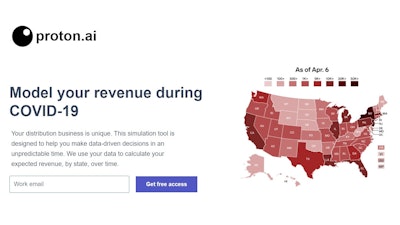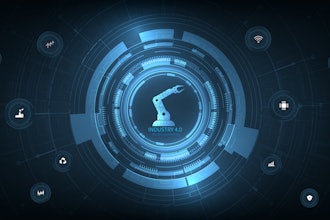
Proton.ai, a software firm that helps distributors harness artificial intelligence, announced this week that it has launched a free coronavirus impact simulator for distributors.
The tool uses sales data, reported COVID-19 case numbers and government information to predict how much revenue distributors can expect from each state in the coming months. The Allston, MA-based company believes the tool will be helpful for executives trying to figure out where to allocate resources and when to bring back branches or furlough workers.
Distributors can get started here: https://simulator.proton.ai/
Proton provided a Q&A about the simulator tool to Industrial Distribution:
Why did we make this?
There are a lot of resources out there right now that talk about how the coronavirus will disrupt businesses and what distributors can do to respond. The problem with that is that every business will be impacted in a different way. We wanted to create a tool that would move past speculation and generalizations — something that would use hard data to to simulate the specific impact of coronavirus on each unique business.
What does the model do?
The model we designed uses sales data and coronavirus statistics to simulate each distributors expected revenue, in each state, over time. We think this information will be tremendously helpful for distributors who need to figure out when to reopen branches, where to allocate resources, and if they need to lay off or furlough workers.
How does it work for distributors?
We’re offering this tool free to all distributors, and are giving results on a first come first serve basis. Once a distributor signs up, we plug their unique sales data into the model, and simulate their expected revenue over time.
What is the model showing so far?
We would love to be able to offer advice to all distributors, but right now the data is showing that each distributor will experience this crisis in a unique way. If you want truly actionable insights for your business, you need to plug your run simulations based on your data.
But like for real, what is the model showing so far?
The simulations seem to suggest that states with more rigorous distancing measures will have stronger economic recoveries. This prediction also seems to be supported by recent reviews on how different economies recovered from the 1918 flu epidemic. But, again, each business is unique. We don’t want to guess how different states and verticals will recover. We want to use data to make informed predictions, so that distributors can pursue informed actions.






















